- 1CNRS-IRAP, Univ. of Toulouse-UPS-CNES, Toulouse, France (jlasue@irap.omp.eu)
- 2LATMOS/IPSL, Sorbonne Univ., UVSQ Univ. Paris-Saclay, CNRS, Paris, France
- 3ARES, NASA-JSC, Houston, TX, USA
Introduction
The life cycle of a spacecraft starts and ends in the Earth’s atmosphere: it interacts with the atmosphere right after the launch and during the atmospheric reentry when it usually mostly ablates. Both phases induce emissions of gases and solid particles, providing a source of these components in the middle atmosphere, particularly in the stratosphere. Little is known about the exact nature, composition and effects of these emissions on the atmosphere and climate, but their impact is expected to rise as more and more orbiting satellites are launched and inevitably re-enter. Since 2000, the number of space rockets launched per year has increased by a factor 3 globally. At the same time, the number of satellites launched in orbit around the Earth per year has increased by about a factor of 30 (Fig. 1). One may wonder whether this volume of anthropogenic material injected into the terrestrial stratosphere can be detected and what the consequences may be.
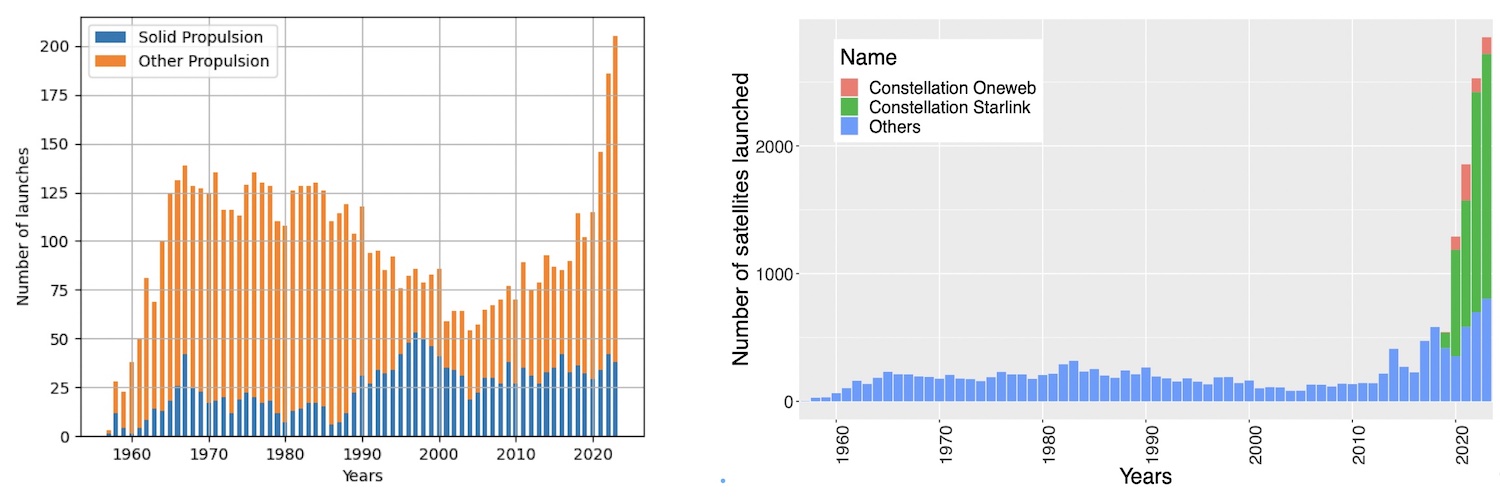
Figure 1: Rocket launches and satellites injected in orbit per year (source: McDowell, J. "Launch Vehicle Database", 2023).
Studying stratospheric materials injection
In order to study the cosmic dust particles arriving on Earth, the NASA Johnson Space Center (JSC) has been systematically collecting solid dust particles from the Earth’s stratosphere by aircraft equipped with dedicated particle collectors since 1981. So far, 25 catalogs have been published, covering campaigns of collection from 1981 to 2020, with a total of 5071 solid particles that have been preliminarily characterized and curated. In this work, we use the preliminary classification of the dust particles. Based on SEM images and EDS compositions the collected dust is separated into four groups: C (Cosmic), TCN (Terrestrial Contaminant Natural), TCA (Terrestrial Contaminant Artificial) and AOS (Aluminum Oxide Sphere). The AOS being mostly generated by solid rocket propellant, they also belong to the TCA class. A 10-fold increase in stratospheric solid particles was previously noticed in the 1970s - 1980s and linked to an increase in rocket launches, but this effort has not been continued (Zolensky et al. 1989). Assuming the sampling and processing of the stratospheric particles collection are unbiased, the cosmic dust catalog database can reflect long-term temporal changes in the stratospheric solid particles compositions. Our analysis of the published data indicates that from 1980 to 2009 the cosmic dust particles typically represent on average 40% of the collection with TCA and TCN corresponding to about 30% each. In recent years, the TCA fraction has doubled to about 60% of the collection (Fig. 2, 2010-2020). This increase in anthropogenic particles is likely due to the overall human space activity and its recent increase. Further classification of the collected dust particles by composition should be performed to better assess their origins (from launchers or satellites, Fig. 3).
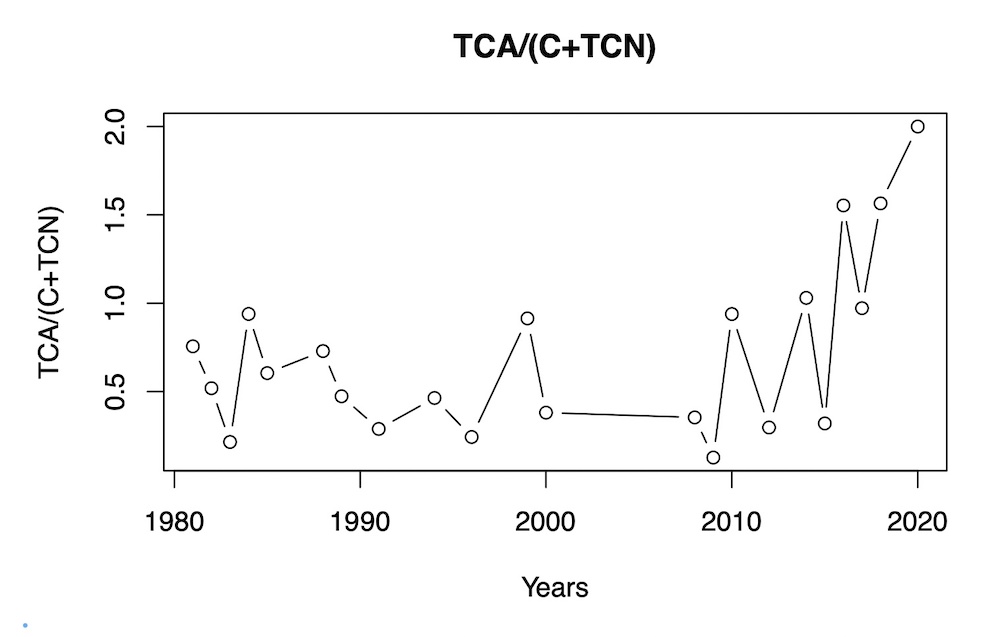
Figure 2: Number of particles of different origins from the NASA stratospheric collection. Recent years reflect an increase in anthropogenic contaminant particles (source: NASA Cosmic dust catalogs 1 to 25; Lasue et al. 2024).
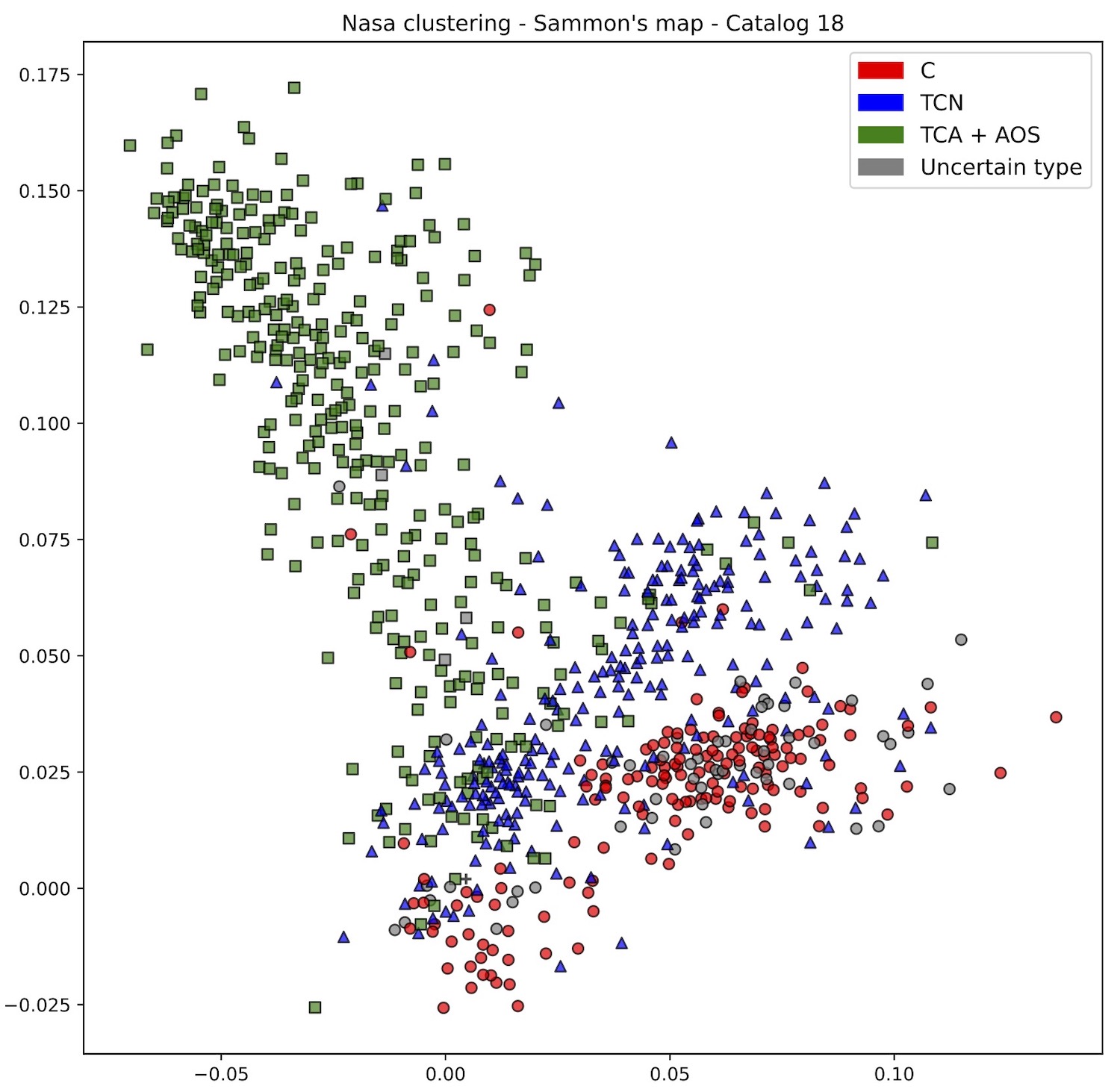
Figure 3: Nonlinear two-dimensional projection (Sammon’s map) of the EDS composition of NASA Cosmic dust particles catalog 18, illustrating the visual separation of the main types of particles collected.
Collection of liquid stratospheric aerosols by the NASA aircraft SABRE program have also shown that those materials are affected by space activities. About 10% of stratospheric sulfuric acid particles larger than 120 nm in diameter contain aluminum and other elements from spacecraft reentry (Murphy et al. 2023). These levels of metallic contents are expected to increase in the future with unknown effects on the atmosphere and its physical processes.
Simulating the atmospheric impact
Atmospheric reentry effects on the atmosphere are largely unknown. But they will increase as low-earth orbit constellations of satellite develop further.
We intend to model the reentry and the fate of the ablated material with numerical models. The first of these is DEBRISK (Annaloro 2020; 2024), developed by the French Space Agency CNES. DEBRISK performs detailed modelling of the demise in the atmosphere of a given object (satellite/debris/…) on a given orbit that can both be described in detail. As output parameters, the model can provide, for example, the ablated mass as a function of altitude in the atmosphere (Fig. 4). Calculation of average mass profiles for the most common satellite types and estimates of the number of reentries per year will allow us to make useful estimates of the mass injected in the atmosphere annually and its evolution. These will be compared to other estimates published in the literature.
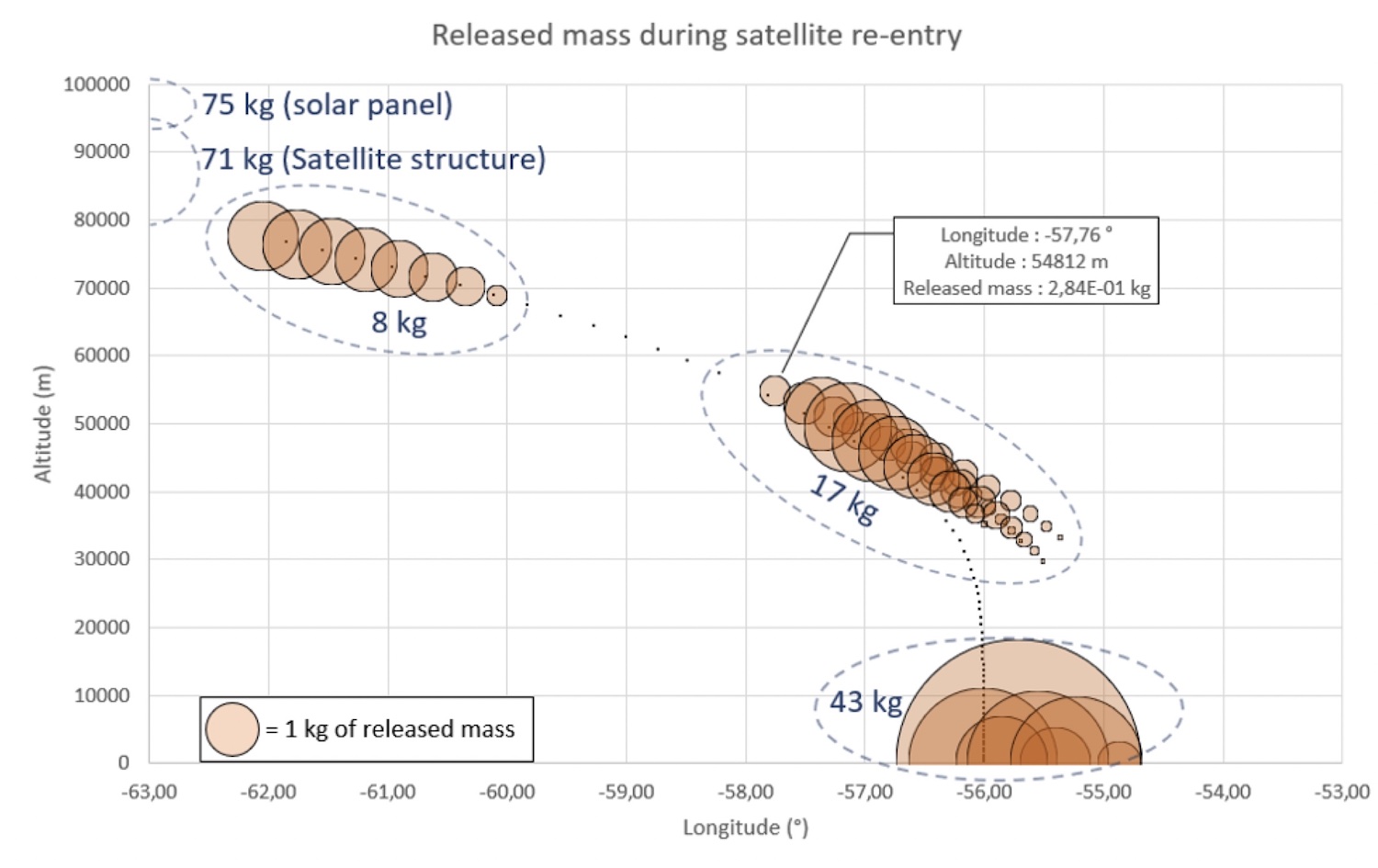
Figure 4: Repartition in altitude and longitude of the released mass, during a 214 kg (dry mass) Starlink satellite re-entry.
The second model is a Global Climate Model, the IPSL-LMDZ version 6 (Hourdin et al. 2020) that includes a description of the stratospheric sulfate aerosols (Kleinschmitt et al., 2013). This code needs to be slightly modified so that it can model particles not composed of a sulfuric acid solution. Before making the modifications, we will do low-resolution tests by using a passive tracer, i.e., a variable that is only transported in the model and that is not modified by any other processes. The final goal is to use as inputs the estimates of average annual injected mass profiles from DEBRISK, and model the fate of these particles in the atmosphere including the modeling of their microphysical processes and potentially their heterogeneous chemistry (Fig. 5).
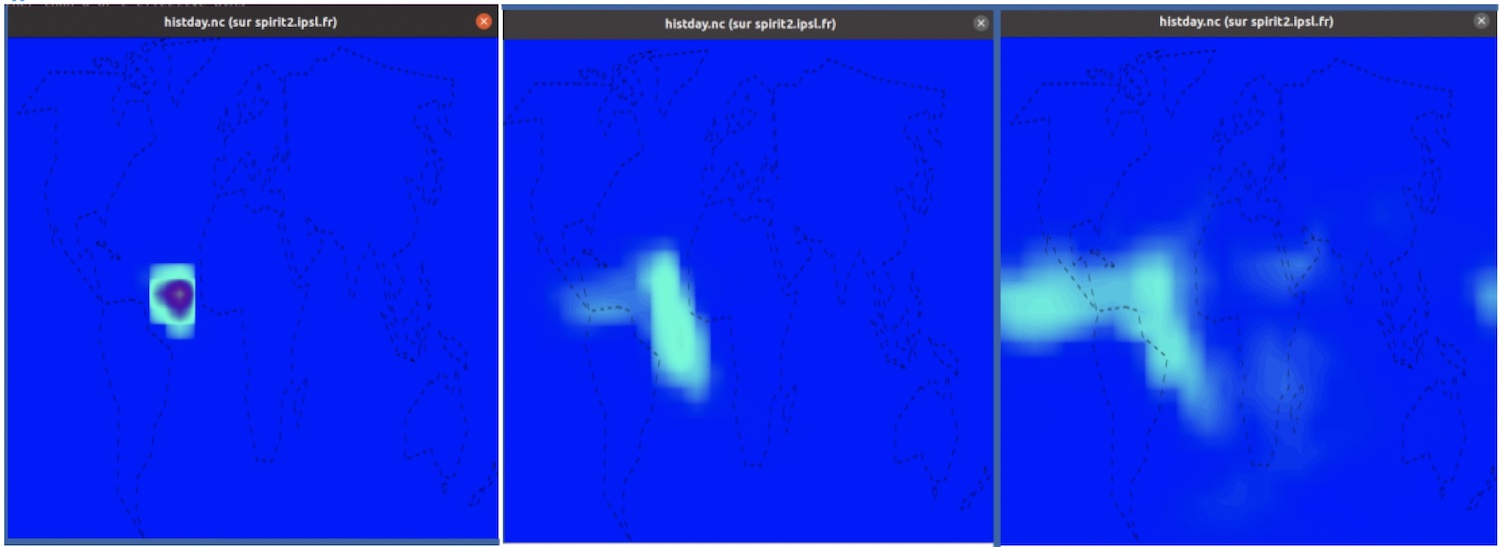
Figure 5: Evolution of a mass of particles during 21 days, on the LMDZ climate model (low resolution) 2 days (left), 12 days (middle) and 21 days (right) after injection
Perspectives
Future work will be dedicated to better identify the natural and anthropogenic particles collected and described in the existing databases and develop new modes of collection. We will also use numerical modelling to produce quantitative estimates of the injected mass, the lifetime of particles in the middle atmosphere (stratosphere) and the relative abundances of the anthropogenic particles with respect to the stratospheric background aerosol population.
How to cite: Lasue, J., Määttänen, A., Falletti, L., Grunewald, A., Marceau, E., Zolensky, M., and Ravetta, F.: Assessing the contamination of the Earth’s stratospheric aerosol layer due to space activities, Europlanet Science Congress 2024, Berlin, Germany, 8–13 Sep 2024, EPSC2024-644, https://doi.org/10.5194/epsc2024-644, 2024.